

| Region rejsu : Europa |
| Firma : Oceania Cruises |
| Statek : Regatta |
| Data rozpoczęcia : pon. 10 sie 2026 |
| Data zakończenia : pon. 17 sie 2026 |
| Liczba nocy : 7 nocy |
| Dzień | Data | Port | Wypłynięcie | Odpłynięcie |
|---|---|---|---|---|
| 1 | 10.08 pon. | Pireus (Ateny) / Grecja | 05:00 | 17:00 |
| 2 | 11.08 wt. | Chania (Souda), Kreta / Grecja | 07:00 | 16:00 |
| 3 | 12.08 śr. | Argostoli, Kefalonia (Wyspy Jońskie) / Grecja | 10:00 | 18:00 |
| 4 | 13.08 czw. | Korfu / Grecja | 07:00 | 16:00 |
| 5 | 14.08 pt. | Saranda / Albania | 07:00 | 17:00 |
| 6 | 15.08 sob. | Bar / Czarna Góra | 07:00 | 17:00 |
| 7 | 16.08 niedz. | Kotor / Czarna Góra | 10:00 | 20:00 |
| 8 | 17.08 pon. | Dubrownik / Chorwacja | 07:00 | 17:00 |
Twój Świat w cenie
Dzięki Twojemu Światu w cenie, będziesz cieszyć się szeroką gamą udogodnień, zapewniających najwyższy komfort i wartość rejsów ultra-premium.
Niezapomniane doznania kulinarne w licznych, wykwintnych restauracjach — wszystko bez dodatkowych opłat.
Bezpłatne kawy specjalistyczne, napoje gazowane, świeżo wyciskane soki oraz woda gazowana i niegazowana Vero Water® serwowane na całym statku.
Nielimitowany, bezpłatny dostęp do Wi-Fi w apartamentach, kabinach i wszystkich pomieszczeniach ogólnodostępnych.
Posiłki serwowane w pokoju z doskonałym wyborem dań na ciepło i zimno.
Koktajle, koktajle mleczne, gelato i firmowe lody Humphry Slocombe — zawsze w cenie.
Grupowe zajęcia fitness w Aquamar® Spa + Vitality Center są bezpłatne.
Napiwki są wliczone w cenę dla Twojej wygody.
Pranie jest bezpłatne dla wszystkich gości.
Dzięki bezpłatnym pralniom samoobsługowym na pokładzie, a także usługom prania i prasowania dla kategorii Concierge i Suite, zawsze będziesz wyglądać olśniewająco. Oprócz naszej charakterystycznej, spersonalizowanej obsługi, zapewnimy Ci wzbogacający rejs bez ukrytych kosztów i prowizji.
Podnieś poziom swoich wrażeń
Kajuty Concierge Level Veranda oferują niezrównane połączenie luksusu, przywilejów i wartości. Bogactwo udogodnień i ekskluzywnych korzyści sprawi, że Twoje wrażenia będą jeszcze bardziej wzniosłe — od dań do wyboru z The Grand Dining Room, przez bezpłatne usługi pralnicze, po nieograniczony dostęp do tarasu Aquamar Spa.
Na pokładzie Oceania Marina i Oceania Riviera możesz również skorzystać z usług dedykowanego Concierge i ekskluzywnego dostępu do prywatnego salonu Concierge Lounge.
Kajuty Concierge Level Veranda, zlokalizowane w najbardziej pożądanych miejscach statku, to coś więcej niż tylko kabiny — to niezapomniane przeżycie.
Concierge Level Veranda — Ekskluzywne przywileje
Rozszerzone menu posiłków do pokoju na lunch i kolację z The Grand Dining Room
Usługi pralnicze — do 3 sztuk bagażu na kabinę
Ekskluzywny dostęp do prywatnego salonu Concierge Lounge na statkach Oceania Marina, Oceania Riviera, Oceania Vista i Oceania Allura za pomocą karty-klucza, oferujący bezpłatne napoje, kawę, przekąski i usługi dedykowanego Concierge'a
Powitalna butelka wyśmienitego włoskiego Prosecco
Priorytetowe rezerwacje online w restauracjach specjalistycznych
Nieograniczony dostęp do tarasu Aquamar Spa
Torba z logo Oceania Cruises
Kaszmirowe koce na kolana — idealne do relaksu i przytulania
Prasowanie odzieży po wejściu na pokład
Bezpłatna usługa czyszczenia butów
Depozyt i płatności – Oceania Cruises
Depozyt ogólny:
W przypadku apartamentów typu Owner’s, Vista i Oceania Suites wymagany jest depozyt w wysokości 20% ceny rejsu od osoby.
W przypadku wszystkich pozostałych kategorii apartamentów/kabin, depozyt wynosi 500 USD od osoby.
W przypadku Grand Voyages depozyt wynosi 1500 USD od osoby.
Terminy depozytu i płatności końcowej:
Rezerwacje dokonane na ponad 150 dni przed rejsem:
Depozyt w wysokości 20% w przypadku apartamentów typu Owner’s, Vista i Oceania Suites oraz 500 USD w przypadku wszystkich pozostałych kategorii wymagany jest w ciągu 5 dni od rezerwacji.
Rezerwacje dokonane na 90–120 dni przed rejsem:
Pełna płatność wymagana w ciągu 3 dni od rezerwacji.
Rezerwacje dokonane na 0–90 dni przed rejsem:
Pełna płatność wymagana w dniu rezerwacji.
Ważne:
Rezerwacje, które nie zostaną wpłacone lub opłacone w całości zgodnie z niniejszym harmonogramem, zostaną automatycznie anulowane. O ile nie zaznaczono inaczej, płatność końcowa musi wpłynąć do Oceania Cruises na 150 dni przed wypłynięciem w przypadku rejsów krótszych niż 15 dni oraz na 150 dni w przypadku rejsów trwających 15 dni lub dłużej.
Oceania Cruises zastrzega sobie prawo do anulowania rezerwacji, które nie zostały w pełni opłacone w momencie płatności końcowej.
Informacje dodatkowe:
Dane paszportowe i specjalne prośby dotyczące usług pokładowych należy przesłać w momencie płatności końcowej.
Płatności można dokonać czekiem osobistym, kartą American Express, Discover, MasterCard lub Visa.
Dla wygody płatność końcowa może zostać automatycznie pobrana z karty kredytowej użytej do wpłaty początkowej.
Oceania Cruises nie ponosi odpowiedzialności za opłaty walutowe ani opłaty transakcyjne pobierane niezależnie przez banki wystawiające karty. Opłaty te nie przysługują Oceania Cruises.
Płatności kartami kredytowymi osób trzecich są akceptowane wyłącznie po uzyskaniu ważnej autoryzacji od posiadacza karty.
Depozyt i płatność – rejsy 180-dniowe
W przypadku rejsów 180-dniowych wymagany jest depozyt w wysokości 20% ceny rejsu od osoby za wszystkie apartamenty i kabiny w ciągu 7 dni od rezerwacji.
Ostateczna płatność musi zostać otrzymana najpóźniej 181 dni przed wypłynięciem, wraz z danymi paszportowymi i wszelkimi specjalnymi prośbami o usługi na pokładzie.
W przeciwnym razie rezerwacja może zostać natychmiast anulowana, a naliczone zostaną stosowne kary.
Forma płatności (FORMA PŁATNOŚCI)
Oceania Cruises akceptuje płatności za rezerwacje kartą kredytową/debetową lub przelewem bankowym.
Niestety, czeki osobiste nie są akceptowane.
Karty kredytowe/debetowe:
Akceptowane są karty American Express, Visa i Mastercard.
Uwaga: Oceania Cruises nie ponosi odpowiedzialności za opłaty za wymianę waluty/transakcje naliczane przez bank wystawiający kartę.
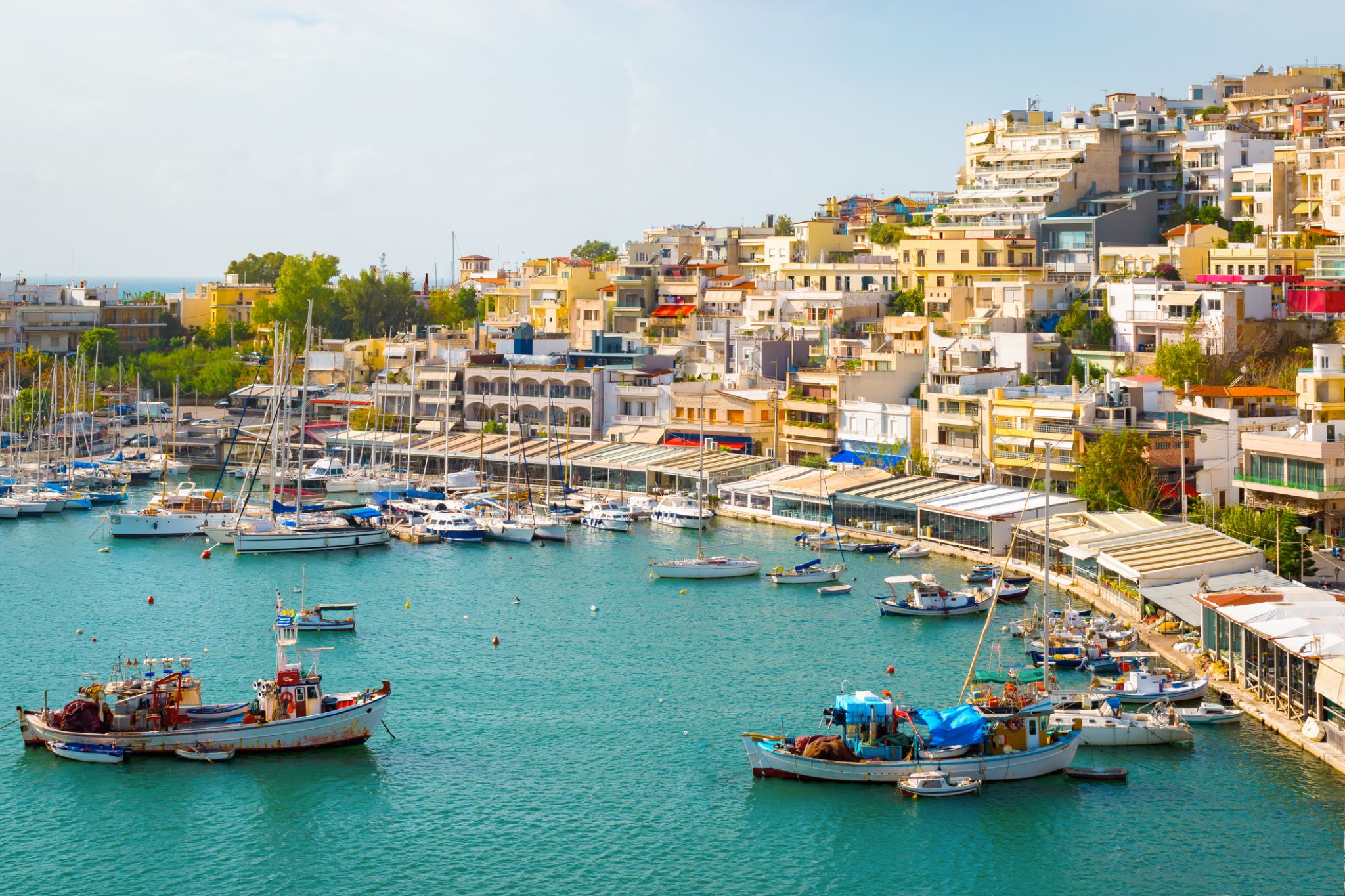
Pireus to stare miasto portowe, będące portem Aten i jednocześnie największym portem Grecji w dniu dzisiejszym. Pireus stanowi część wielkich Aten, które mogą poszczycić się bogactwem atrakcji, w tym unikalnymi zabytkami narodowej sztuki plastycznej.
Ponad dwieście muzeów i galerii, w tym Muzeum Historii Uniwersytetu, Muzeum Archeologiczne Keramejkos i wiele innych, gościnnie powita Państwa w swoich murach i zapozna z kulturą tej okolicy.
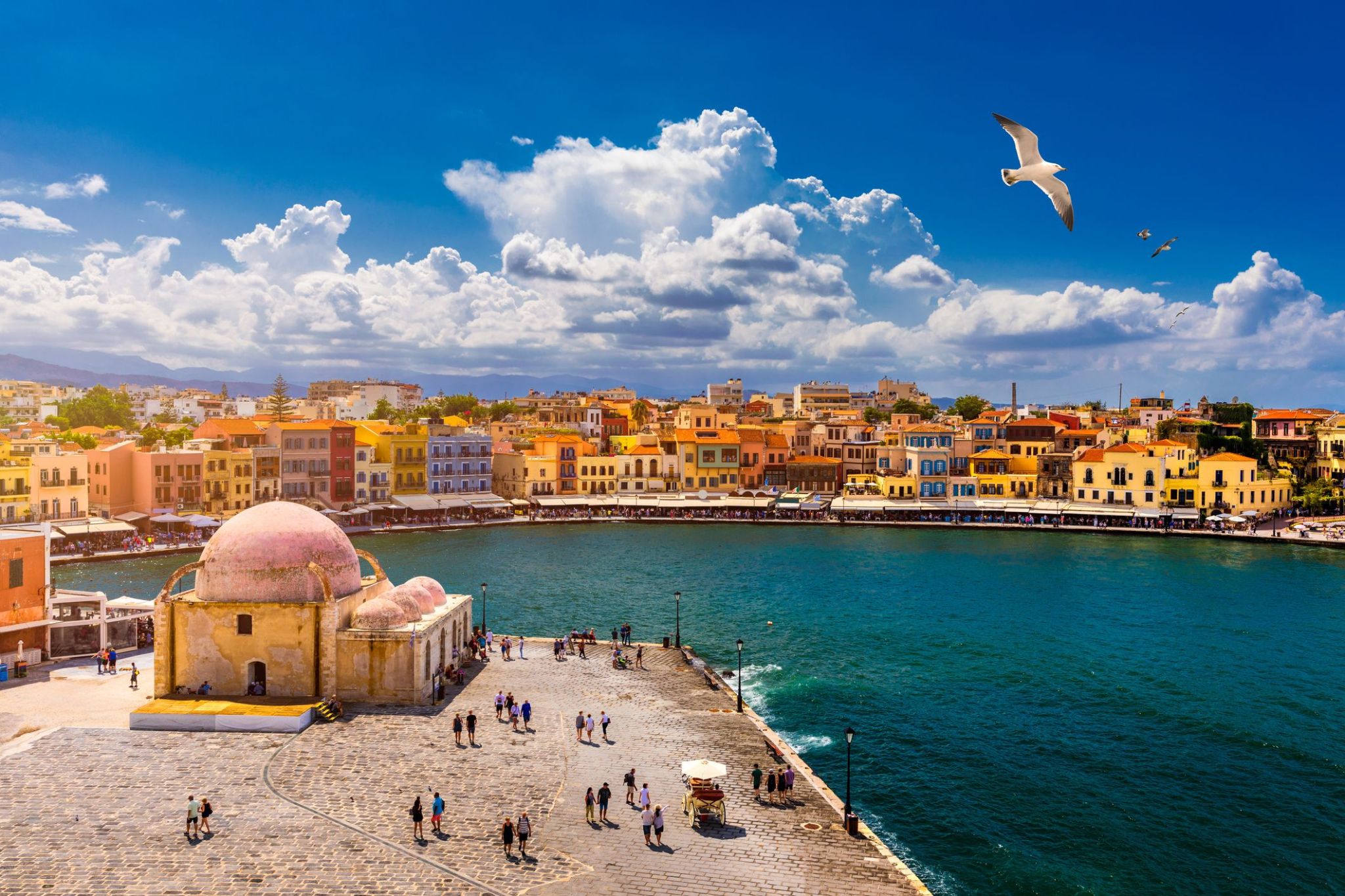
Chania (Souda), Kreta — Urok i historia
Chania, położona na północno-zachodnim wybrzeżu Krety, przyciąga podróżnych swoją historyczną atmosferą i malowniczym weneckim portem. Wąskie uliczki, budynki i przytulne kawiarnie tworzą unikalny urok, łącząc elementy architektury weneckiej i osmańskiej.
Souda to ważny port morski i promowy, położony w zatoce Souda, na wschód od Chanii. Port odgrywa kluczową rolę w sieci transportowej wyspy i ma strategiczne znaczenie dla regionu. W okolicach Chanii znajdują się stanowiska archeologiczne, w tym pozostałości starożytnych miast, a także atrakcje przyrodnicze, takie jak jaskinie i pomniki z czasów II wojny światowej.
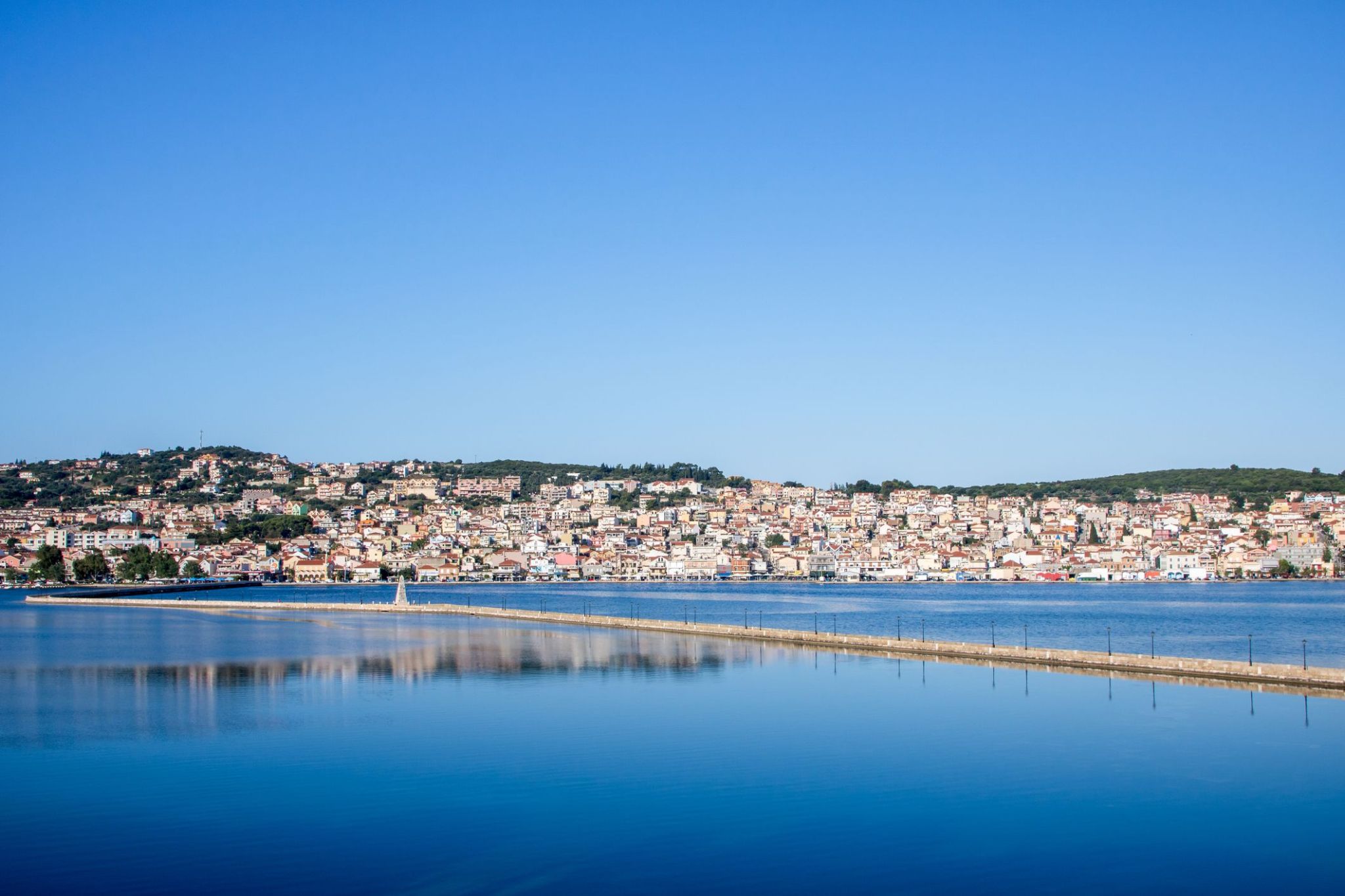
Argostoli to stolica Kefalonii, największej wyspy Archipelagu Jońskiego w Grecji. Miasto, położone na zachodnim wybrzeżu wyspy, słynie z malowniczych nadbrzeży, eleganckich kawiarni i neoklasycznych budynków. W Argostoli znajduje się także wiele historycznych zabytków, w tym Archeologiczne Muzeum Kefalonii oraz plac Valiianos, na którym można zobaczyć ślady zniszczeń pozostałe po trzęsieniu ziemi z 1953 roku, które niemal całkowicie zniszczyło miasto. Spacerując po ulicach, turyści mogą podziwiać harmonijne połączenie tradycyjnej greckiej architektury z nowoczesnością.
Miasto jest również doskonałą bazą wypadową do odkrywania naturalnych piękności Kefalonii. Zaledwie kilka kilometrów od Argostoli znajdują się znane plaże, takie jak Lourdas i Melissani, a także słynna jaskinia Dragonera, gdzie można podziwiać stalaktyty i stalagmity. Z Argostoli łatwo jest również udać się na wycieczki do unikalnych rezerwatów przyrody, takich jak rezerwat żółwi, w którym żyją rzadkie morskie żółwie Caretta caretta. Miasto to idealne miejsce do połączenia turystyki kulturalnej z odkrywaniem naturalnych cudów wyspy.
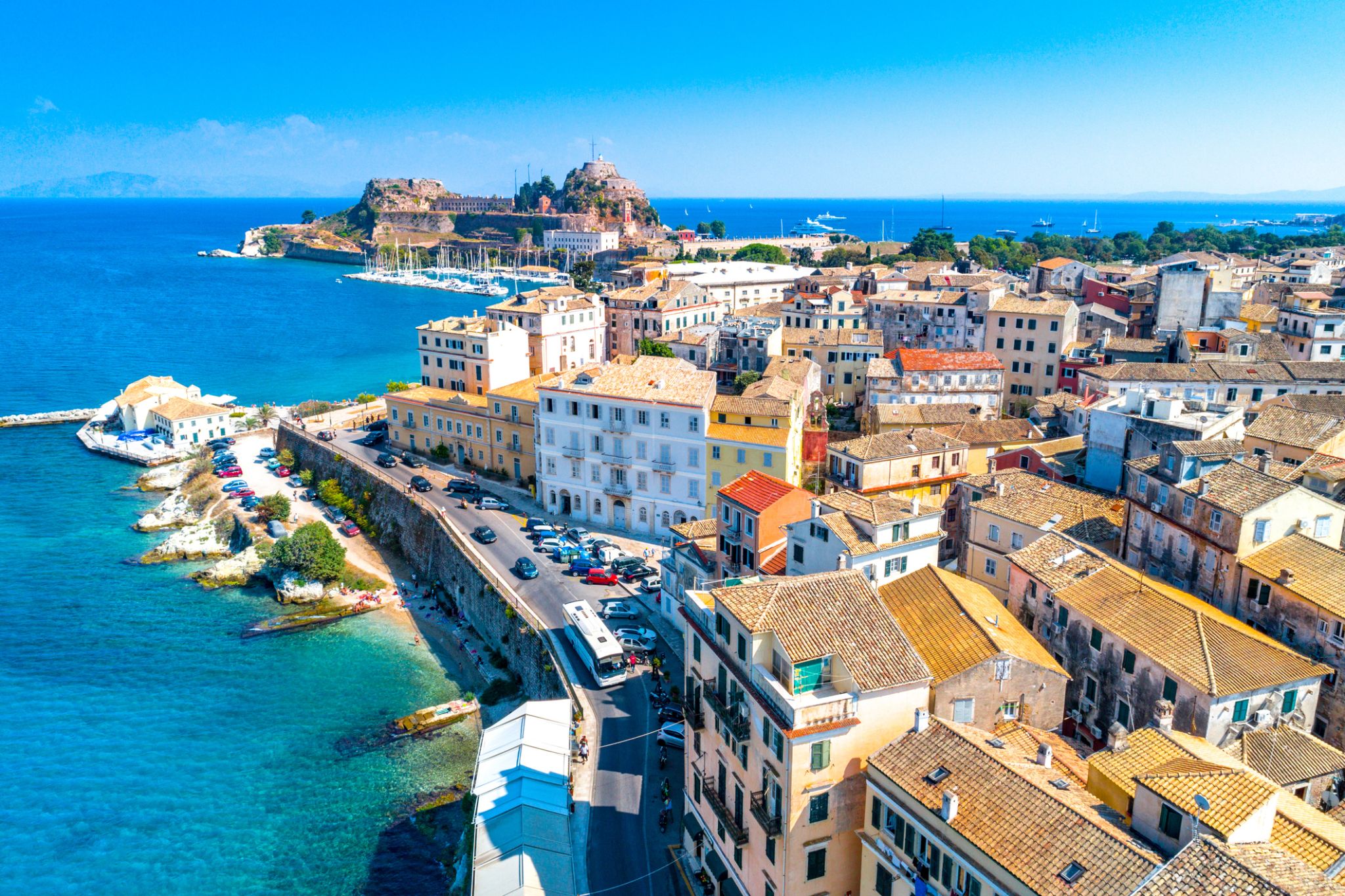
Korfu uchodzi za najpiękniejszą wyspę archipelagu Jońskiego. Wyspa jest niezwykle żyzna – głównymi produktami są oliwa z oliwek, owoce południowe i wino. Stara część miasta Korfu zachwyca malowniczymi uliczkami i architekturą różnych kultur europejskich. Wyspa ma bogatą historię – przez wieki przyciągała najeźdźców, a największy wpływ na jej kulturę wywarły Włochy, co łatwo wytłumaczyć bliskością tego kraju. Korfu odwiedzali m.in. Goethe i Napoleon, a cesarzowa Elżbieta Austriacka mieszkała tu przez długi czas. Klimat sprzyja turystom – nawet latem morska bryza przynosi przyjemne orzeźwienie.

Zatoka o turkusowych wodach i panoramicznych widokach na grecką wyspę Korfu wita podróżnych w Sarandzie – południowej perle Albanii. To nadmorskie miasteczko podbija serca turystów łagodnym klimatem, nadbrzeżną architekturą, świeżymi owocami morza i malowniczymi zachodami słońca. Choć Saranda jest niewielka, może poszczycić się bogatą historią, sięgającą czasów starożytnych Greków i Rzymian, co potwierdzają pobliskie znaleziska archeologiczne.
Jedną z największych atrakcji jest starożytne miasto Butrint, wpisane na listę światowego dziedzictwa UNESCO, oddalone zaledwie o 30 minut jazdy. Miłośników przyrody zachwyci także źródło „Błękitne Oko” z krystalicznie czystą wodą. Saranda to idealne miejsce na nadmorski wypoczynek, gdzie dziedzictwo kulturowe harmonijnie współgra z relaksującą atmosferą i gościnnością mieszkańców.
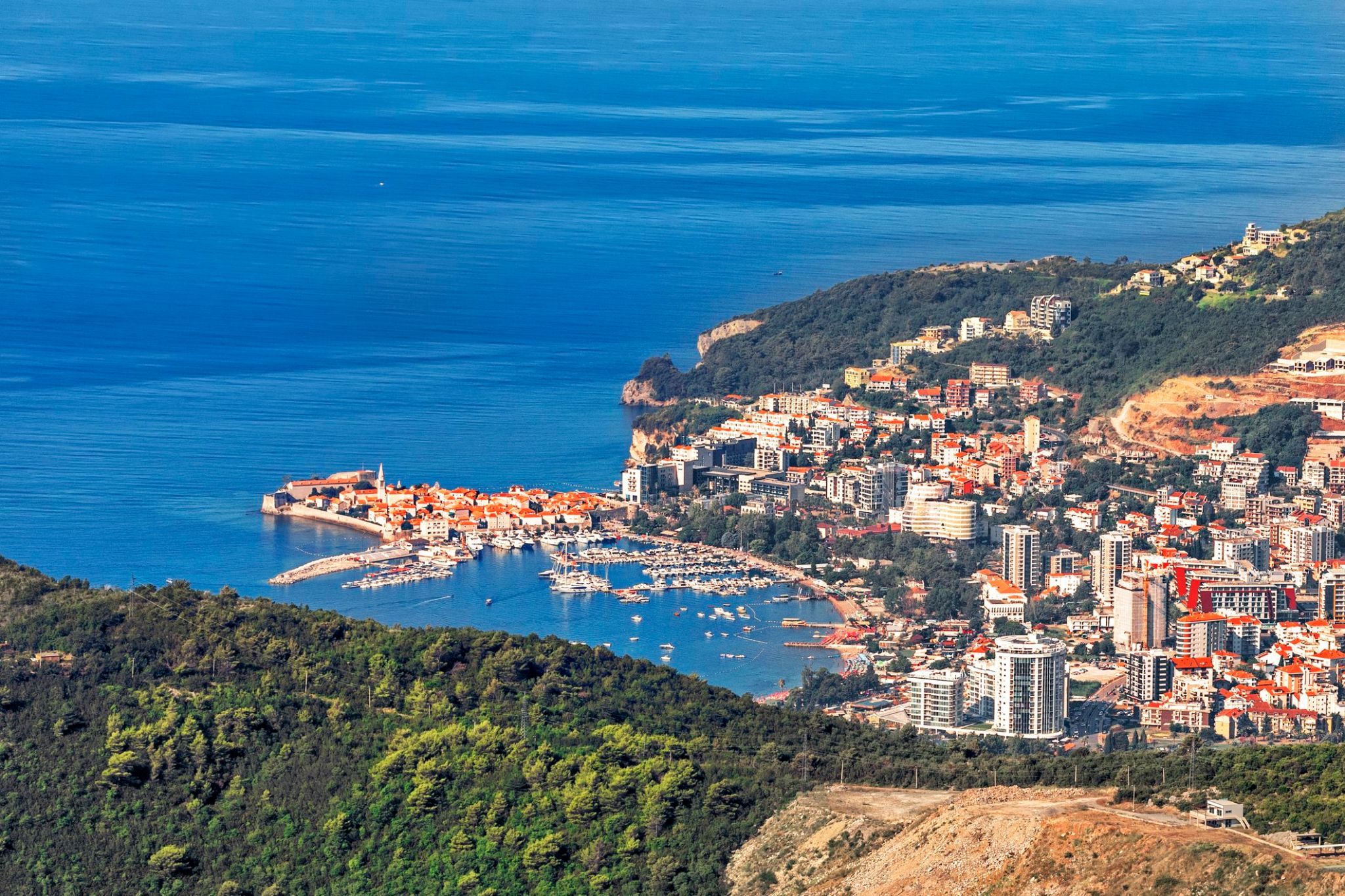
Wśród zapachów gajów oliwnych i słonej bryzy Adriatyku turystów wita Bar – nadmorskie miasto w Czarnogórze, które łączy starożytną historię z urokiem morza. Można tu spacerować po uliczkach Starego Baru, gdzie ruiny dawnych twierdz przypominają o wpływach osmańskich i weneckich, lub skosztować lokalnego wina w cieniu wielowiekowej oliwki – jednej z najstarszych w Europie.
Współczesny Bar oferuje także komfortowe plaże, świeże owoce morza i doskonałe warunki do żeglowania. To idealne miejsce dla tych, którzy szukają nie tylko słońca i morza, ale także kontaktu z autentyczną kulturą bałkańską. Dzięki wygodnemu połączeniu promowemu z Włochami, Bar jest doskonałym punktem wyjścia do podróży po Adriatyku.
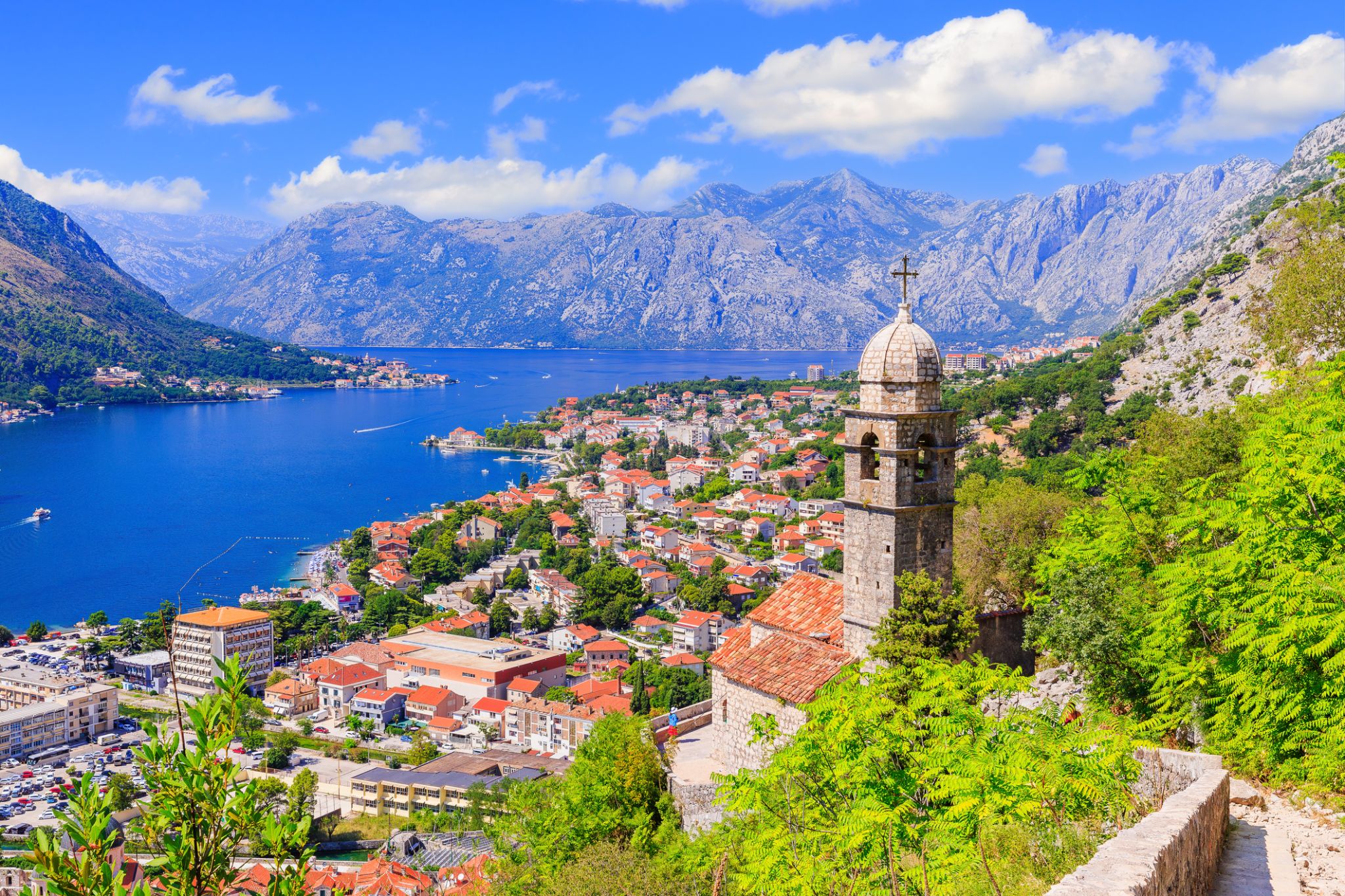
Kotor is a coastal town in Montenegro. It is located in a secluded part of the Gulf of Kotor. The city has a population of 13,510 and is the administrative center of Kotor Municipality.
The old Mediterranean port of Kotor is surrounded by fortifications built during the Venetian period. It is located on the Bay of Kotor (Boka Kotorska), one of the most indented parts of the Adriatic Sea. Some have called it the southern-most fjord in Europe, but it is a ria, a submerged river canyon. Together with the nearly overhanging limestone cliffs of Orjen and Lovćen, Kotor and its surrounding area form an impressive landscape.
Since the early 2000s Kotor has seen an increase in tourists , many of them coming by cruise ship. Visitors are attracted by the natural environment of the Gulf of Kotor and by the old town of Kotor. Kotor is part of the World Heritage Site dubbed the Natural and Culturo-Historical Region of Kotor.
The fortified city of Kotor was also included in UNESCO's World Heritage Site list as part of Venetian Works of Defence between 15th and 17th centuries: Stato da Terra – western Stato da Mar in 201
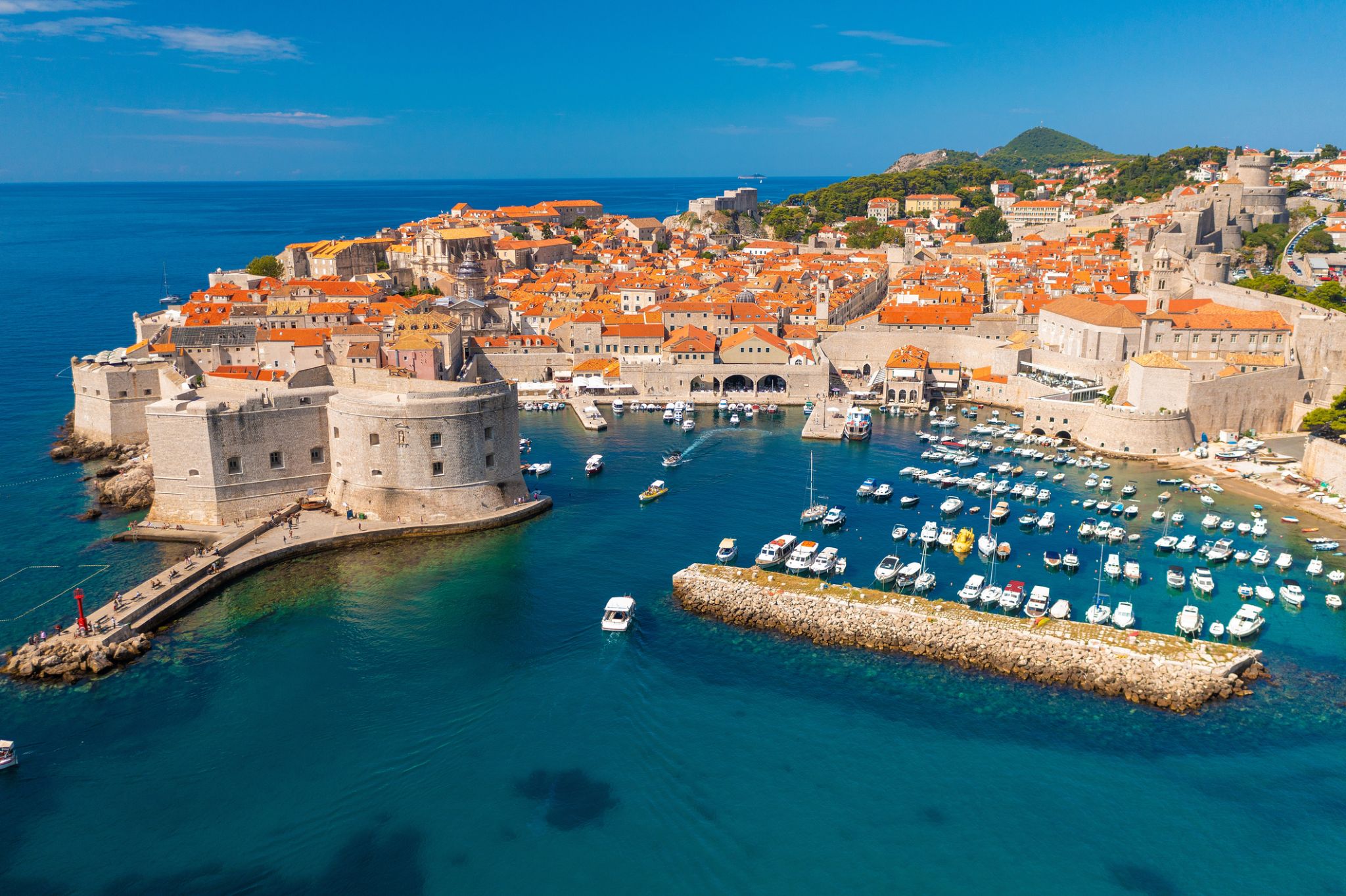
Dubrovnik is a Croatian city on the Adriatic Sea. It is one of the most prominent tourist destinations in the Mediterranean Sea, a seaport and the centre of Dubrovnik-Neretva County. Its total population is 42,615 (census 2011). In 1979, the city of Dubrovnik joined the UNESCO list of World Heritage sites.
The prosperity of the city was historically based on maritime trade; as the capital of the maritime Republic of Ragusa, it achieved a high level of development, particularly during the 15th and 16th centuries, as it became notable for its wealth and skilled diplomacy.
In 1991, after the break-up of Yugoslavia, Dubrovnik was besieged by Serbian and Montenegrin soldiers of the Yugoslav People's Army (JNA) for seven months and suffered significant damage from shelling. After repair and restoration works in the 1990s and early 2000s, Dubrovnik re-emerged as one of the top tourist destinations in the Mediterranean.